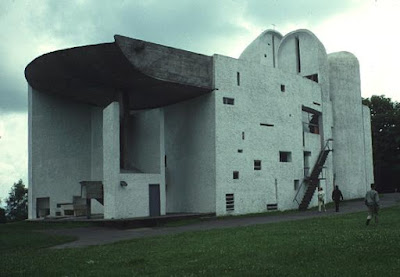From the humblest of churches to the most majestic of cathedrals, they have a way of bringing even the reluctant to their knees. Their interiors inspire our souls and reflect our aspirations of wanting to surround ourselves with Godliness, whether simplistic or ornate in presence.
The church's interior is often-times a person's first exposure to architecture and craftsmanship that is beyond the ordinary. An introduction, if you will, to "the finer things in life". Soaring spaces with light filtering through jewel-colored glass...reflecting off the polished gilded carvings. The faint must of incense, forever in our memories, and the inexplicable feeling of deja vu. The "church" experience can, no doubt, also have a lasting impression upon our subconscious of how we respond and relate throughout life to our surroundings and our own preferences of styles.
During this holy season, it is only fitting to give our respects to the interiors of churches from around the world...regardless of your affiliation or preference of style...
 Photo taken by my friend Pierre on his recent trip to Patzcuaro, Michoacan in Mexico.
Photo taken by my friend Pierre on his recent trip to Patzcuaro, Michoacan in Mexico.~

St. Stevens Cathedral I, Alhambra California http://www.cathedralsofcalifornia.com/
~

Architect Sigurd Lewerentz's Chapel of the Resurrection in Stockholm, Sweden
http://www.msa.mmu.ac.uk/continuity/ Continuity in Architecture
The restrained use of ornamentation speaks for itself on the beauty of simplicity.
"I like the silent church before the service begins, better than any preaching" ~ Ralph Waldo Emerson
~
The blog site "Scandinavians & Baltics" has numerous photos with some great examples of Barocco and Roccoco churches, as well as the simple interiors you would come to expect from the Scandinavians, dating back to early centuries

"In Kurzeme (Courland) rural Gothic style churches are very simple from outside – like this one in Edole (150 km from Riga): But very often they hide later Barocco and Roccoco interiors inside (Edole)"


 St. George’s Cathedral in Istanbul
St. George’s Cathedral in Istanbul
~
"The Hanging Church (below) derives its name from its location on top of the southern tower gate of the old Babylon fortress in old Cairo with its nave suspended above the passage. (Muallaqa translates to ‘suspended’) The church was first built, in Basilica style, in the 3rd or 4th century. However, at that time it is unlikely that the church would have been constructed in this location. They covered the towers with palm trunks and a layer of stone. The main church is thought to have been built between the 5th and 6th centuries with the south-eastern section called the “upper church” being added later. The church was destroyed in the 9th century and rebuilt. The last modification was in 1755 A.D.




~
In Palermo, Sicily, the Norman kings in the 12th century installed mosaics in the Duomo (Cathedral), the Cappella Palatina, the Martorana, the Palazzo Reale, and the Palazzo della Zisa. Other Norman mosaics embellish the interior walls of the great churches at Cefalù (1148 and later) and Monreale (1180-90); in both churches the sanctuary walls are covered with cycles of biblical scenes and, in the apse, powerful figures of Christ and saints in bright-colored glass and stone against gold backgrounds.



~
"Frisian medieval churches. There are many medieval churches in Friesland (the N-East region of Holland). The church of Hogebeintum was build in the first half of the 12th century. Famous because of its mourning plates at the wall of the church. "

~
Now... strip away all the ornamentation of the interior, down to it's fundamental elements... and you have the masterpiece of "a total work of art, where the architecture, sculpture, painting and poetry come together masterfully". Le Corbusier (1887-1965) was one of the 20th century's most important architects. He designed only three religious structures, all in France. One of them was the pilgrimage chapel at Ronchamp.
This space makes great use of the principles and elements of design, and epitomizes the "less is more" concept.
It relates more to a spiritual awareness than that of religion.







www.hectorlarico.com/2008_04_01_archive.html
Chapelle Notre-Dame du Haut at Ronchamp
"Remember, the entrance door to the sanctuary is inside you." ~ Rumi




What a wonderful post. When I was a child I loved cathedrals and still do. The simple Swedish or Dutch ones are dear to my eye.
ReplyDelete